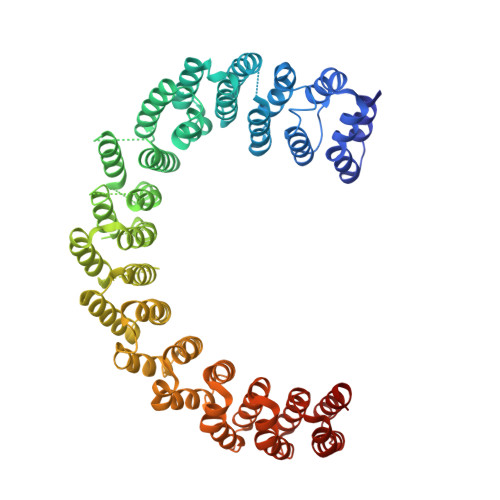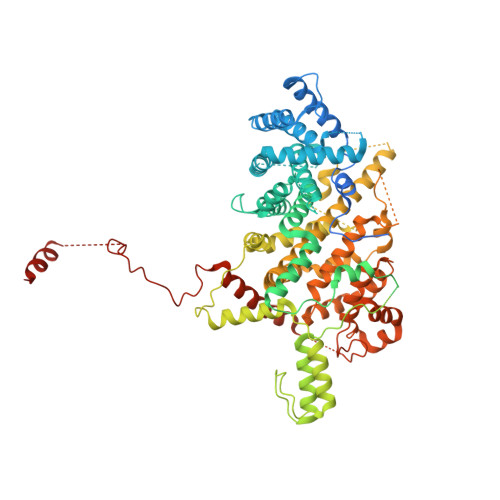Cryo-EM structure of the Hippo signaling integrator human STRIPAK.
Jeong, B.C., Bae, S.J., Ni, L., Zhang, X., Bai, X.C., Luo, X.(2021) Nat Struct Mol Biol 28: 290-299
- PubMed: 33633399
- DOI: https://doi.org/10.1038/s41594-021-00564-y
- Primary Citation of Related Structures:
7K36 - PubMed Abstract:
The striatin-interacting phosphatase and kinase (STRIPAK) complex is a large, multisubunit protein phosphatase 2A (PP2A) assembly that integrates diverse cellular signals in the Hippo pathway to regulate cell proliferation and survival. The architecture and assembly mechanism of this critical complex are poorly understood. Using cryo-EM, we determine the structure of the human STRIPAK core comprising PP2AA, PP2AC, STRN3, STRIP1, and MOB4 at 3.2-Å resolution. Unlike the canonical trimeric PP2A holoenzyme, STRIPAK contains four copies of STRN3 and one copy of each the PP2AA-C heterodimer, STRIP1, and MOB4. The STRN3 coiled-coil domains form an elongated homotetrameric scaffold that links the complex together. An inositol hexakisphosphate (IP 6 ) is identified as a structural cofactor of STRIP1. Mutations of key residues at subunit interfaces disrupt the integrity of STRIPAK, causing aberrant Hippo pathway activation. Thus, STRIPAK is established as a noncanonical PP2A complex with four copies of regulatory STRN3 for enhanced signal integration.
Organizational Affiliation:
Department of Pharmacology, University of Texas Southwestern Medical Center, Dallas, TX, USA.





















